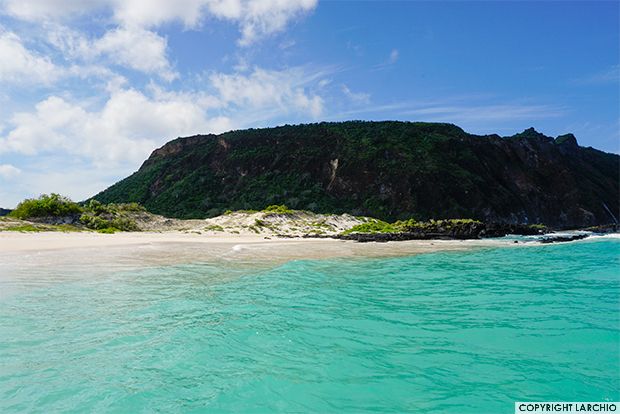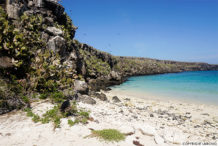Best Rated Galapagos tours 2025
We’re one of the best Galapagos local tour operator. Take a trip with trust!. Best Rated Galapagos tours 2025.
A holiday to the Galapagos Islands may just be the adventure of an individual’s entire life. Located 1,000 km from the Ecuador, the archipelago consists of 13 big islands, five of which are inhabited. Find out about the famous Islands taking a vacation here!
The Galapagos Islands will definitely affect you significantly. Take a trip with our company and enjoy the experience of your lifetime amidst playful sea lions, beautiful albatrosses, fiery crimson sally light-foot crabs, and frigate birds. Allow your dream becoming reality and book with us today!
When is the best time to visit the Galapagos?
Excellent Weather for traveling to anytime. Galapagos is on the Equator although the temperature is not tropical. Temperatures vary from 69°-84°F / 21°-30°C.
Hot months are from January to June.
Dry and fresh months are from July to December.
The Galapagos were discovered by chance in 1535 by Father Tomas Berlanga, Bishop of Panama.
Due to the long distances involved, the only sensible approach to explore the Galapagos is by live-aboard boats, which travel between islands, largely at night, and also create different stops every day. Over 80 boats are licensed to operate from the archipelago and also there are an infinite number of combinations of stops and paths. Most cruises go ashore two times a day: 10 full days on the boat typically means 20 shore landings, 10-20 snorkels, and several panga rides (pangas are little, open outboard-powered ships) to about 10 distinct islands.
Exploring on your own is much harder. Getting around separately is tricky and all traffic must be accompanied by a qualified naturalist guide at all landing sites. But four islands (Santa Cruz, San Cristobal, Floreana and Isabela) have hotels of varying dimensions and standards and a couple of vessel operators provide day-trips.
Some cruises leave from Baltra (the pier is a five-minute drive from the air terminal). Other people go out of Puerto Ayora, the tourist hub on Santa Cruz and a relatively busy town, with a bank, ATM machine, taxis, pubs and even a cinema.
GalapagosInformation.com offers a variety of tailor-made live-aboard tours on a lot of unique boats carrying from 4 to 16 passengers.

Wildlife actions vary a lot, and every month has its highlights. For example, green turtles begin their egg-laying in January; penguins socialize with swimmers on Bartolome largely from May until the end of September; humpback whales begin to arrive at June; July through to the end of September is the ideal period for many seabird action; peak pupping for sea lions is approximately August, while their pups perform aqua-aerobics with snorkelers in November; and December is the month to get hatching giant tortoise eggs. So, always there is something about to happen.
The hot, humid, slightly rainy season (with occasional tropical showers) is from December to May (March and April are usually hottest and wettest). The seas tend to be calmer and clearer at this time of year (using 60ft-80ft visibility typical) and the water temperature averages 79° F (26°C), so this interval is ideal for snorkeling.
The trendy, drier, windier year (with occasional drizzle or mist) is from June to November. Sea temperatures at this time of year fall to as low as 66F (19C) and visibility frequently goes down to 30ft-50ft, while sea swells can make some landings catchy.
Plan ahead if you wish to see during the high season. Visiting outside of these periods will still provide lots of adventures and wildlife experiences, but costs might be reduced with fewer other tourists around.
With minimal variation in water and air temperatures throughout the entire year, and many species that aren’t migratory, an Isabela Island cruise is a fantastic adventure at any time. Ordinarily, but the waters are clearer between January and March, making this a perfect time for avid snorkeling fans. The driest months are generally between August and December, perfect for beach lovers.
Pay a visit to the Galapagos in January to watch green sea turtles arriving and laying eggs on the beaches, and in April to find the eggs hatching. Bird spotters will probably prefer to see Isabela Island between August and March, once the range of migratory birds is at its summit. October is the mating interval for fur seals, whilst brown nodes are active in November. December is the best month if you wish to see the hatching of giant tortoises.
Before joining any Galapagos cruises, you will initially have to create your way to mainland Ecuador. International flights generally arrive at the country’s capital city of Quito, even though it’s also possible to take an overseas flight to Guayaquil. Flights to the Galapagos Islands leave every day from both Quito and Guayaquil.
Galapagos Animals
The Galapagos penguin is the sole available from the northern hemisphere and to strain in the tropics.
A Galapagos tortoise can weigh up to 595lb (270kg) with a carapace of 4ft (1.2m) and outlive many people.
The endemic Galapagos fur sea lions are the smallest one of the world’s seven species of such animals
The Galapagos Marine Iguana is the only marine lizard to exist in the world.
The Galapagos Islands are home to the world’s biggest cormorant and the only one unable to fly.
Galapagos has one of the world’s rarest ecosystems where the herbivores on peak of the food chain are reptiles.
Galapagos Swallow-tailed gulls are the only gulls in the world to feed at night .
The Galapagos boasts the world’s biggest and just red-footed booby colony.
There are 23 species of reptile from the Galapagos and all but two of these are endemic to the archipelago.
The Galapagos is one of those very few areas of the planet where turtles continue to be a frequent sight. More than 400 species of fish have now been recognized in the Galapagos, with 41 species unique to the islands.
In 30cm in length and using a large pair of jaws that are venomous, the endemic centipede (Scolopendra galapagoensis) is one of the Islands’ most feared creatures.
A lichen poll in June 2010 from the Charles Darwin Foundation discovered over 60 new species from the Galapagos with a estimated ten species new to science.
GALAPAGOS CRUISES 2024
NEMO 2
| DEPARTURES | ITINERARY | AVAILABLE CABINS | SPACES | |
|---|---|---|---|---|
| There aren't available dates for the selected dates |
















